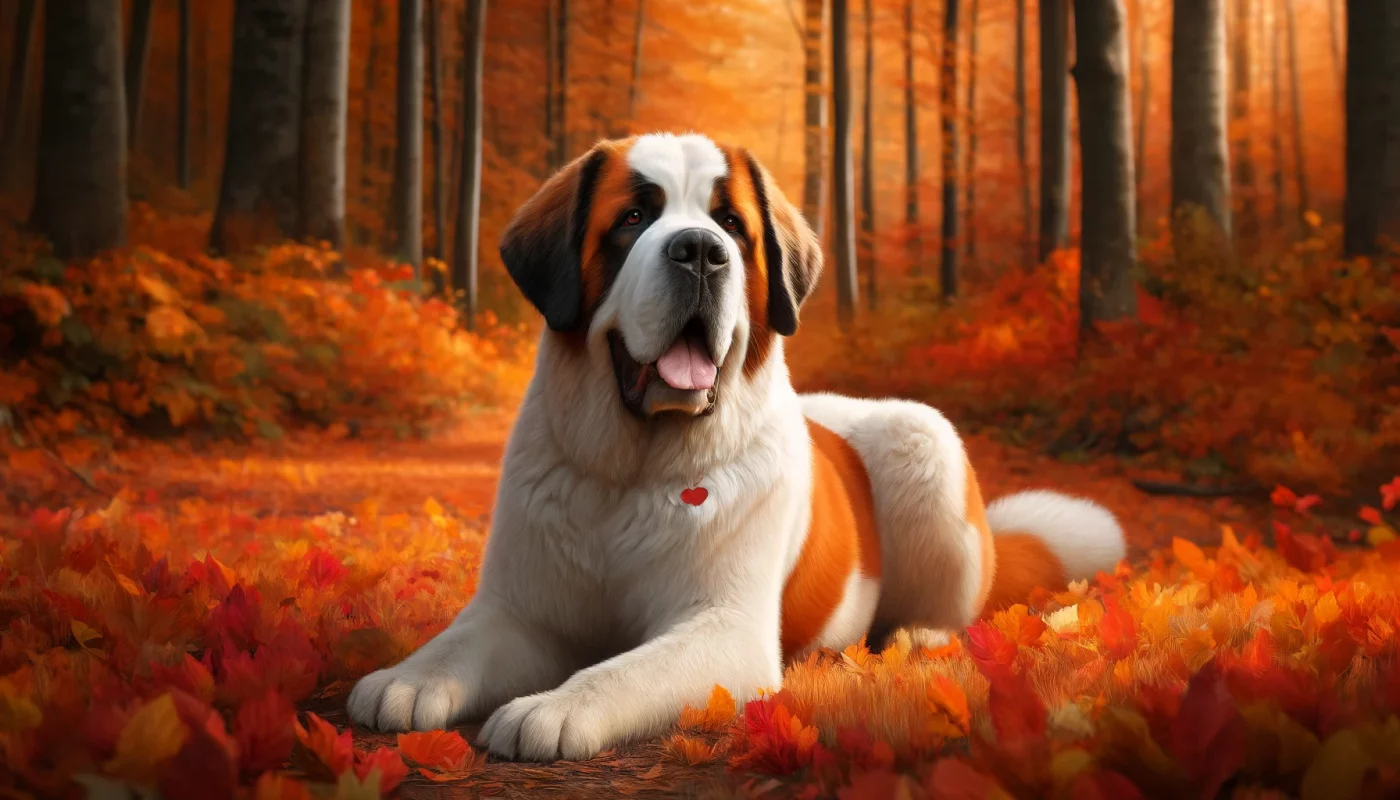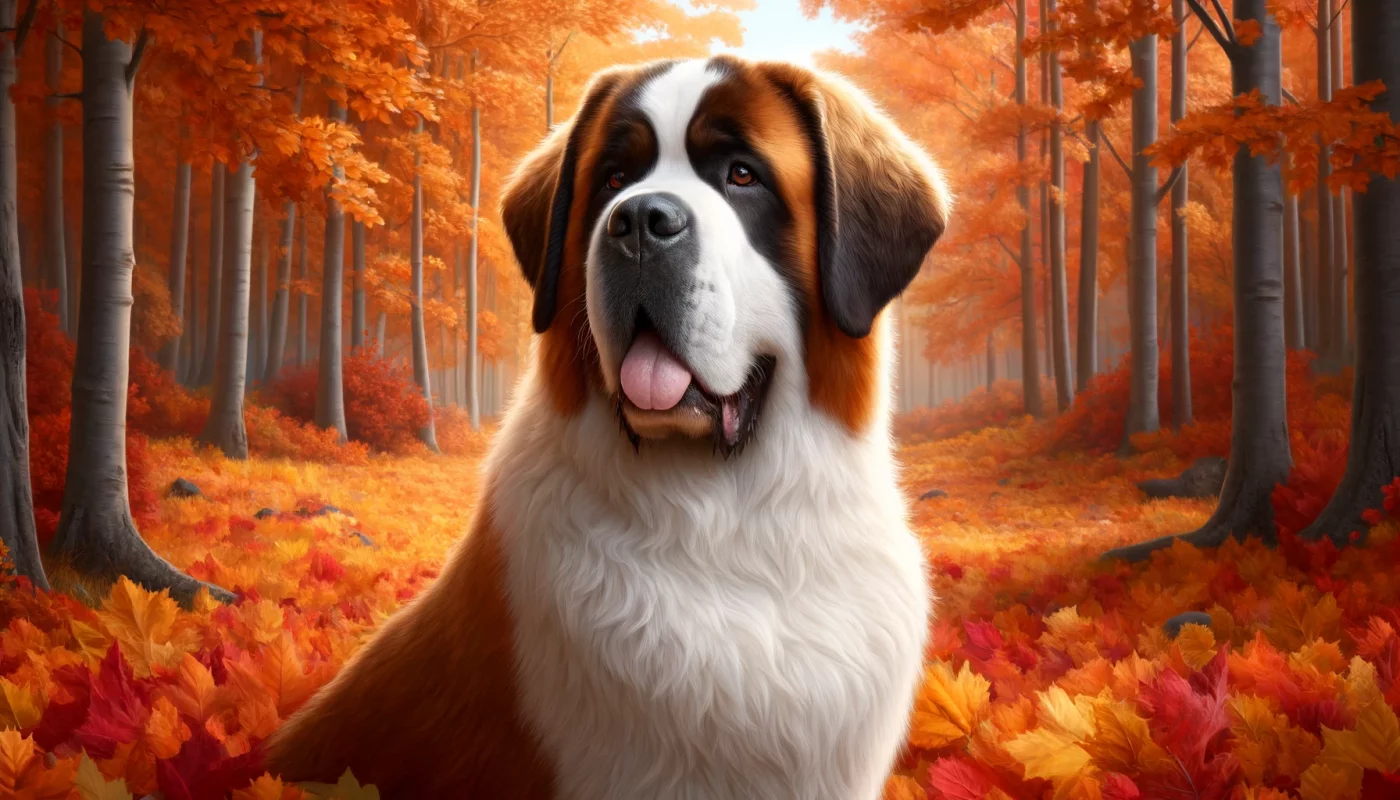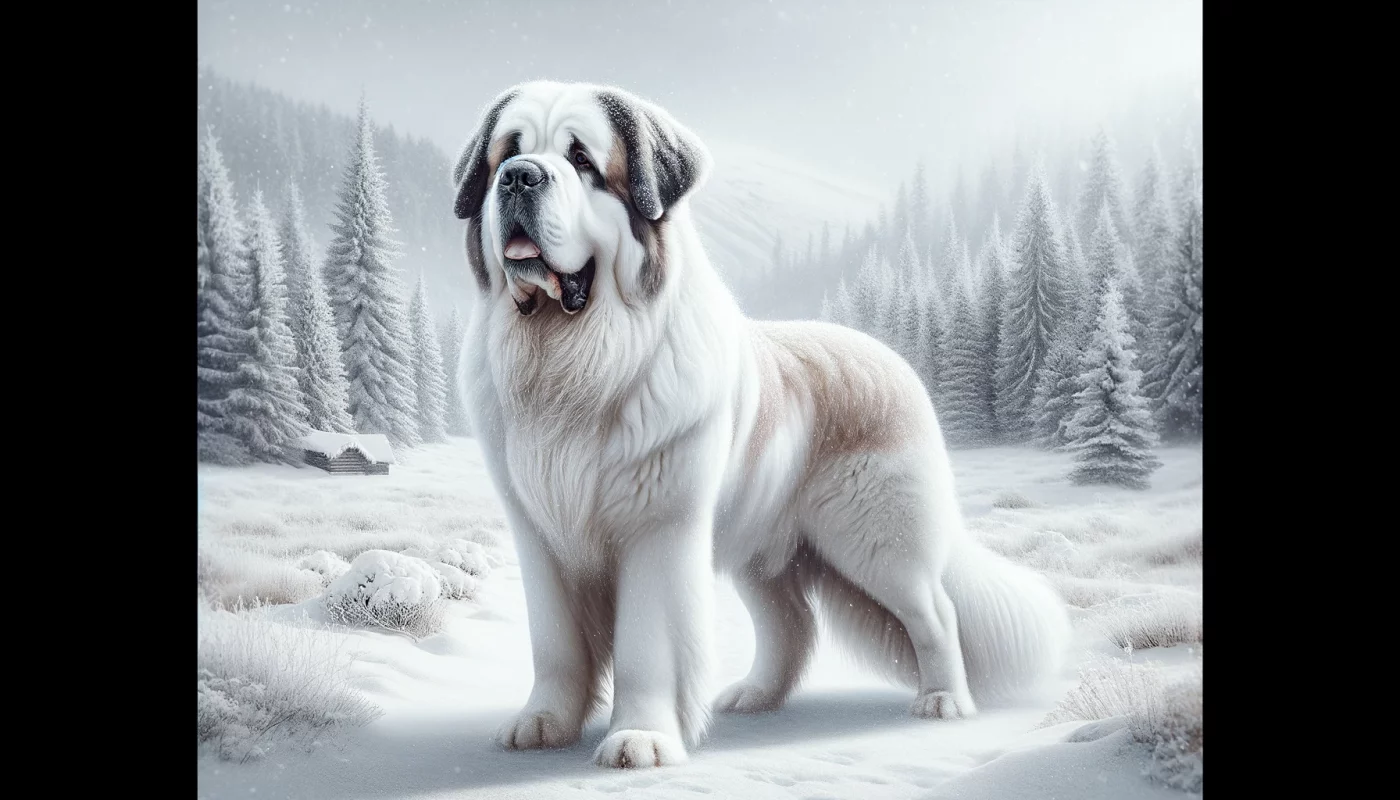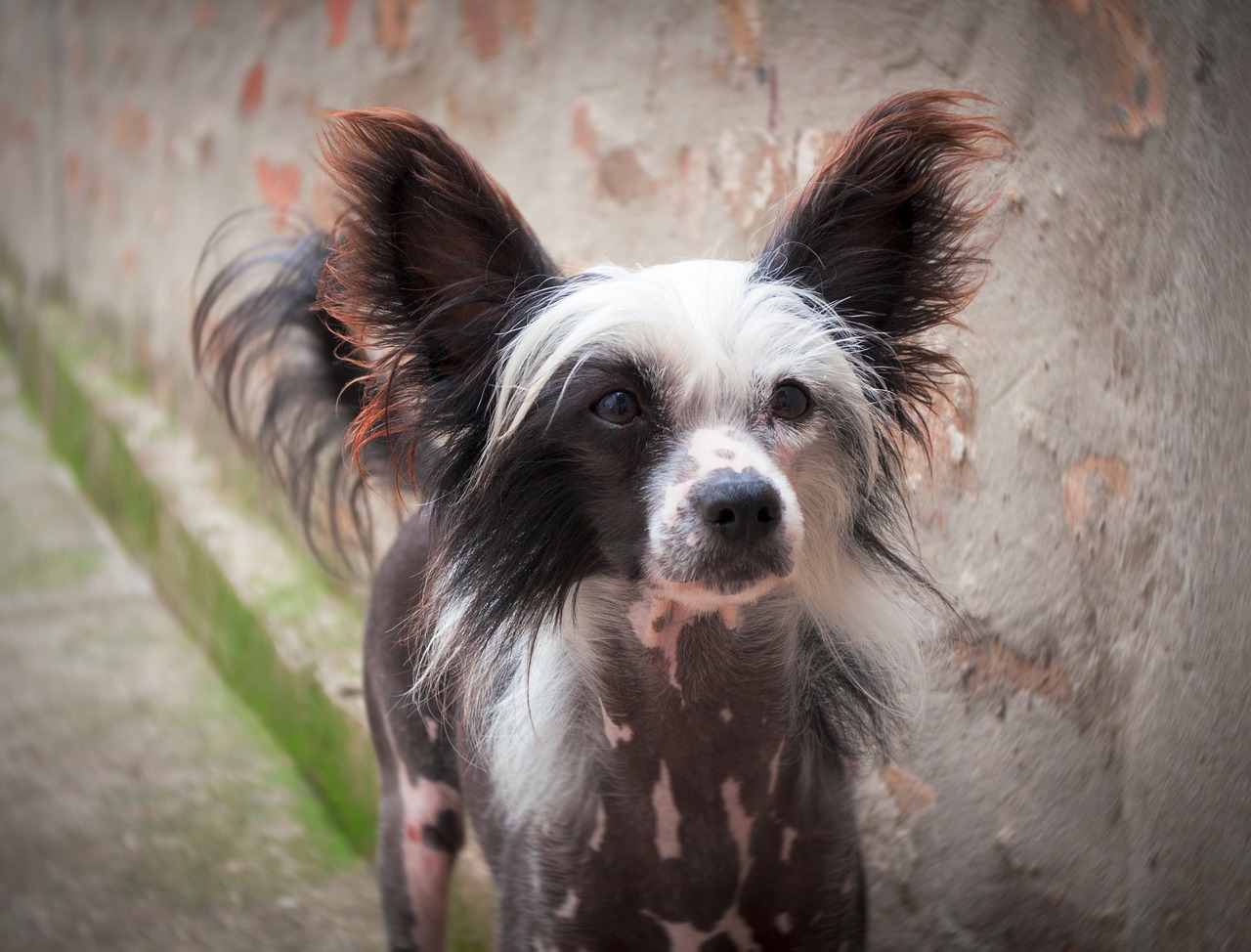St. Bernards, known for their remarkable size and gentle temperament, also boast an array of stunning coat colors that enhance their noble presence. Originating from the Swiss Alps, where they were originally bred for mountain rescue at the Great St. Bernard Hospice, these dogs are not only a symbol of strength but also of visual appeal due to their distinctive color patterns. The breed standard allows for several color variations, each adding to the individuality of these canines. While their color may vary, the impact of a St. Bernard’s appearance is consistently striking, making them a favorite among dog enthusiasts around the world. Below, we explore seven beautiful color variations of the St. Bernard, detailing the unique characteristics and appeal of each. From the deep, rich tones to the more subtle hues, each color variation of a St. Bernard carries its own story and charm.
1. Red and White

The red and white St. Bernard is perhaps the most iconic color variation of the breed. This pattern features large, rich red patches that are beautifully juxtaposed against stark white fur. The red can range from a deep mahogany to a brighter cherry red, and these patches typically appear over the back, flanks, and sometimes over the face, giving the dog a distinguished mask-like appearance. This coloration is not just visually striking; it also has historical significance as it represents the traditional appearance of the breed as depicted in many early paintings and records. Red and white St. Bernards are particularly popular in the show ring due to their eye-catching contrast and historical accuracy in terms of breed standards.
2. Brindle and White

Brindle and white St. Bernards feature a unique pattern that sets them apart from their counterparts. Brindle refers to a coat pattern featuring dark stripes on a lighter base. In St. Bernards, this base is typically white, with stripes ranging from dark brown to almost black. This tiger-stripe pattern usually appears along the back and sides, providing a stunning contrast with the white parts of the coat on the chest, paws, and tail tip. Brindle and white St. Bernards are admired for this distinctive patterning, which adds a wild, rugged beauty to their already impressive stature.
3. Brown and White

Brown and white St. Bernards display a softer, yet equally charming color scheme. This variation includes shades of brown, from light tan to deep chocolate, complemented by white markings. The distribution of brown and white is similar to the red and white variety, with the rich brown providing a warm, inviting look. This coloration tends to give the St. Bernard a softer expression, which correlates well with the breed’s renowned gentle and amiable nature. Brown and white St. Bernards are often seen in homes as beloved family pets due to their endearing appearance and demeanor.
4. Orange and White

The orange and white St. Bernard is a rarer sight but is incredibly striking. The orange here is not the bright, citrusy shade one might expect but rather a rich, golden hue that can vary from light amber to a deep rust. This variation usually features large, well-defined patches of orange set against a crisp white background. The orange and white combination is eye-catching and provides a vibrant contrast that highlights the robust features of these gentle giants.
5. Black and White

Black and white St. Bernards are less common but offer a dramatic visual appeal. Their coats feature bold black patches against a predominantly white background, often with a symmetrical pattern that enhances their noble bearing. The starkness of the black against the white adds an element of sophistication to their appearance. Black and white St. Bernards are especially striking in snowy settings, where their contrasting colors stand out against the landscape.
6. Mahogany and White

Mahogany and white St. Bernards possess a deep, reddish-brown color that is both elegant and striking. The mahogany can appear almost black in certain lights but generally has a warm, rich tone that exudes luxury. Like the other variations, this color pattern features white accents that enhance the richness of the mahogany shade. This variant is highly prized for its beautiful color that seems to glow, particularly in sunlight.
7. Fully White

Though extremely rare and not officially recognized as a standard color, fully white St. Bernards do exist. These dogs are completely white with no markings. While visually stunning, this coloration is often associated with certain genetic health issues, such as deafness, which is more prevalent among dogs with a lack of pigment. Nonetheless, a fully white St. Bernard is a sight to behold, appearing almost ghostly and serene in its pure whiteness.
In conclusion, the variety of coat colors available in St. Bernards allows this breed to appeal to a wide range of preferences, enhancing their suitability as both working dogs and companion animals. Whether draped in deep mahogany, striking black and white, or the classic red and white, each color variation brings its own unique flair to the breed, underscoring the majestic and benevolent nature of these impressive canines. Each coat tells a story, not just of the breed’s aesthetic appeal but also of its storied history and continued popularity.

 1 week ago
14
1 week ago
14
















![Cost of a Borzoi Puppy by US Region [2024]](https://iheartdogs.com/wp-content/uploads/2024/04/borzoi-4950553_1280.jpg)

 English (US) ·
English (US) ·